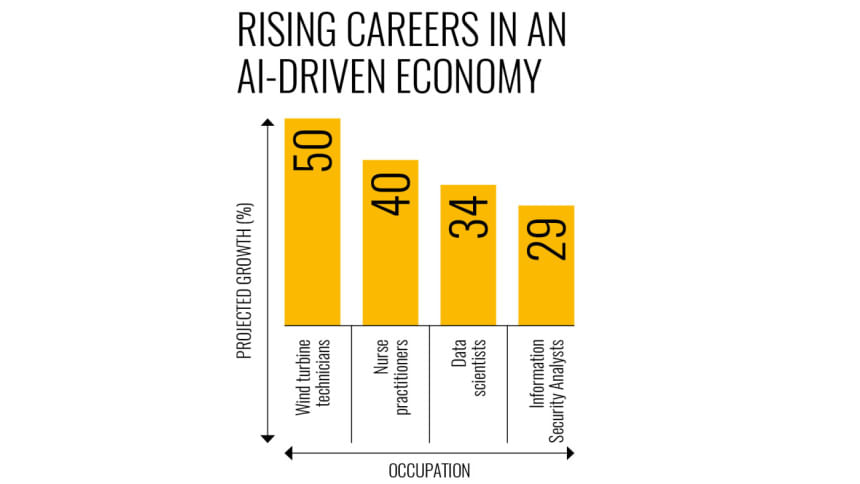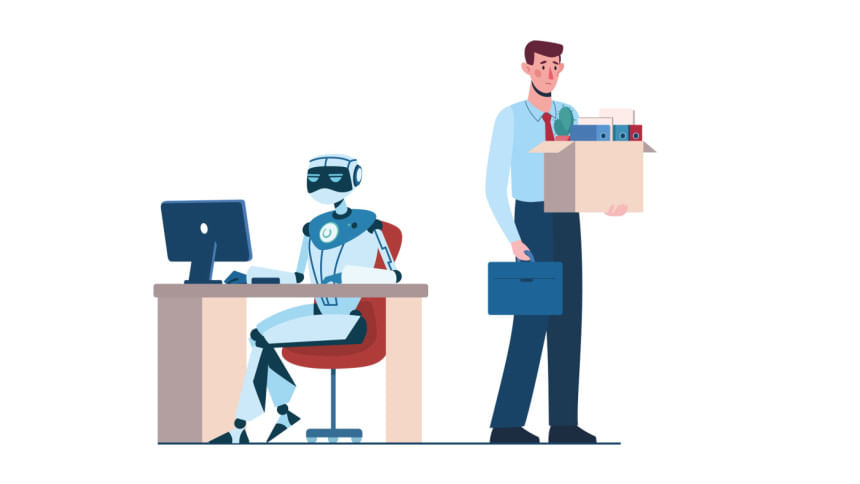The AI Job Shift

Artificial intelligence is no longer a futuristic idea. It is here, reshaping careers in real time. From automating routine office work to fueling growth in new industries, AI is rewriting the rules of employment. For young people planning their futures, the challenge is clear: how to prepare for jobs that last while avoiding ones that are disappearing.
The jobs under threat
AI is no longer just an abstract force on the horizon. It is already cutting into the lower rungs of the career ladder. Routine tasks once seen as entry points into stable careers such as writing, bookkeeping, customer support, even basic programming are increasingly becoming automated. A Stanford analysis shows just how stark the change has been. Between late 2022 and mid-2025, employment for 22–25-year-olds in the most AI-exposed jobs fell 6%, while older workers in the same fields actually grew by 6–9%. The very group most in need of entry-level experience is finding the ground shifting under their feet.
The numbers paint a sobering picture. Market-research analysts face 53% of their daily tasks as automatable, and sales representatives about 67%. Both are far higher than their managerial counterparts. It means that while leadership roles may still demand human judgment, the roles that traditionally serve as gateways to those positions are being hollowed out. What happens to ambition when the "training wheels" of the job market disappear?
The anxiety isn't just statistical. Geoffrey Hinton, widely regarded as the "Godfather of AI," has issued perhaps the most direct warning: "Rich people are going to use AI to replace workers. It's going to create massive unemployment." It is not a message of science fiction but of present economics. Hinton's words highlight a troubling imbalance: those with capital will harness AI to boost profits, while those seeking their first job may struggle to get a foothold at all.

This raises deeper questions. If the entry-level door closes, how do young people acquire the skills, experience, and resilience that only early jobs once provided? Do we need new apprenticeship models, more emphasis on hybrid human-AI roles, or even a rethinking of how we define "work" in an age where machines can mimic so much of it?
The challenge, then, is not only to adapt skills but to adapt systems. Without deliberate strategies from universities, policymakers, and industries, an entire generation risks being sidelined before their careers can even begin.
Where opportunities are growing
Not all jobs are under siege. Roles requiring physical dexterity or direct human care remain resilient. Trades such as plumbing, carpentry, and construction are difficult to automate, while healthcare roles, particularly nursing, are seeing surging demand worldwide.
U.S. labor data shows very strong growth in several high-demand occupations. Nurse practitioners are projected to grow 40% between 2024 and 2034, while data scientists are expected to see about 34% growth and information security analysts about 29% in that same period. Wind turbine service technicians are forecast to lead with around 50% growth.
Globally, the World Economic Forum's Future of Jobs Report 2025 predicts that 170 million new roles will be added by 2030 even as 92 million jobs are displaced by technology and automation.
Navigating the transition
So how should young people prepare? By combining technical knowledge with human skills. Areas like AI fluency, data analysis, cybersecurity, and renewable energy are worth studying, while creativity, adaptability, critical thinking, and emotional intelligence remain irreplaceable. Young workers should embrace hybrid models, learning to work with AI rather than against it. The future of work is shifting rapidly. The safest route is a mix: future-proof industries plus personal skills no machine can replace.


 For all latest news, follow The Daily Star's Google News channel.
For all latest news, follow The Daily Star's Google News channel. 



Comments